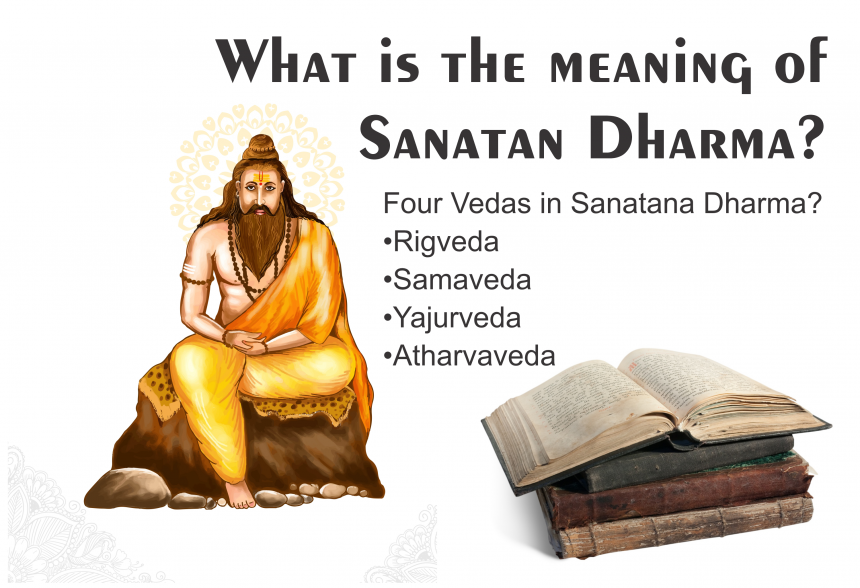“Sanatan Dharma” is a Sanskrit term that translates to “eternal” or “universal” religion or duty. It’s a concept deeply rooted in Hindu philosophy and refers to the eternal or timeless principles that govern and sustain the universe.
“Sanatan” means eternal or timeless, and “Dharma” translates to duty, righteousness, law, or virtue. So, Sanatan Dharma encapsulates the idea of a universal and timeless duty or law that governs not just religious practices but also encompasses moral, ethical, and spiritual principles.
In a religious context, Sanatan Dharma refers to the traditional, cultural, and spiritual practices and beliefs of Hinduism. It’s not just a religion but a way of life, incorporating moral values, duties, responsibilities, and practices that aim to lead individuals toward righteousness, harmony, and spiritual growth.
Sanatan Dharma emphasizes the interconnectedness of all life forms, the pursuit of truth, the concept of karma (the law of cause and effect), and the idea of fulfilling one’s duties (dharma) in various roles within society while seeking spiritual liberation (moksha).
It’s important to note that while Sanatan Dharma is commonly associated with Hinduism, the term itself encompasses a broader and deeper philosophical understanding that goes beyond a single religion, emphasizing the universal and timeless principles governing life and existence.
What is Vedas in Sanatana Dharma?
In Sanatana Dharma (commonly known as Hinduism), the Vedas are considered the oldest and most authoritative scriptures. They are a collection of ancient texts regarded as divine revelations and are revered as the foundational texts of Hindu philosophy, spirituality, and religious practice.
The term “Veda” means “knowledge” or “wisdom” in Sanskrit. The Vedas are considered not human-authored but rather revealed knowledge imparted to ancient sages (rishis) through divine revelation or direct insight during deep meditation. They are believed to contain eternal truths about the nature of existence, spirituality, rituals, and the cosmos.

Four Vedas in Sanatana Dharma?
In Sanatana Dharma (Hinduism), the four Vedas are ancient sacred texts that form the foundation of Hindu philosophy, spirituality, and ritual practices. Each Veda consists of different parts, including hymns (Samhitas), rituals (Brahmanas), melodies (Sama), and philosophical discussions (Upanishads). The four Vedas are:
- Rigveda: Considered the oldest Veda, it contains hymns dedicated to various deities like Agni (fire), Indra (king of gods), Varuna (god of water), and others. The Rigveda Samhita is the primary collection of hymns.
- Samaveda: Known for its musical chants, the Samaveda consists of melodies and chants primarily drawn from the Rigveda, but arranged in a musical format for chanting during rituals. It emphasizes the musical aspects of the Rigvedic hymns.
- Yajurveda: This Veda contains rituals and procedures for performing sacrifices. It’s divided into two main parts: the “White Yajurveda” (Shukla Yajurveda), which contains the verses and their explanations, and the “Black Yajurveda” (Krishna Yajurveda), which contains the verses mixed with the prose.
- Atharvaveda: Comprising hymns and incantations, the Atharvaveda includes spells, magical chants, healing practices, and rituals for everyday life. It deals with various aspects of life, including medicine, marriage, and social conduct.
Each Veda has its own significance, and together they cover a wide array of subjects, ranging from spiritual and philosophical inquiries to practical aspects of life, rituals, and societal norms.









